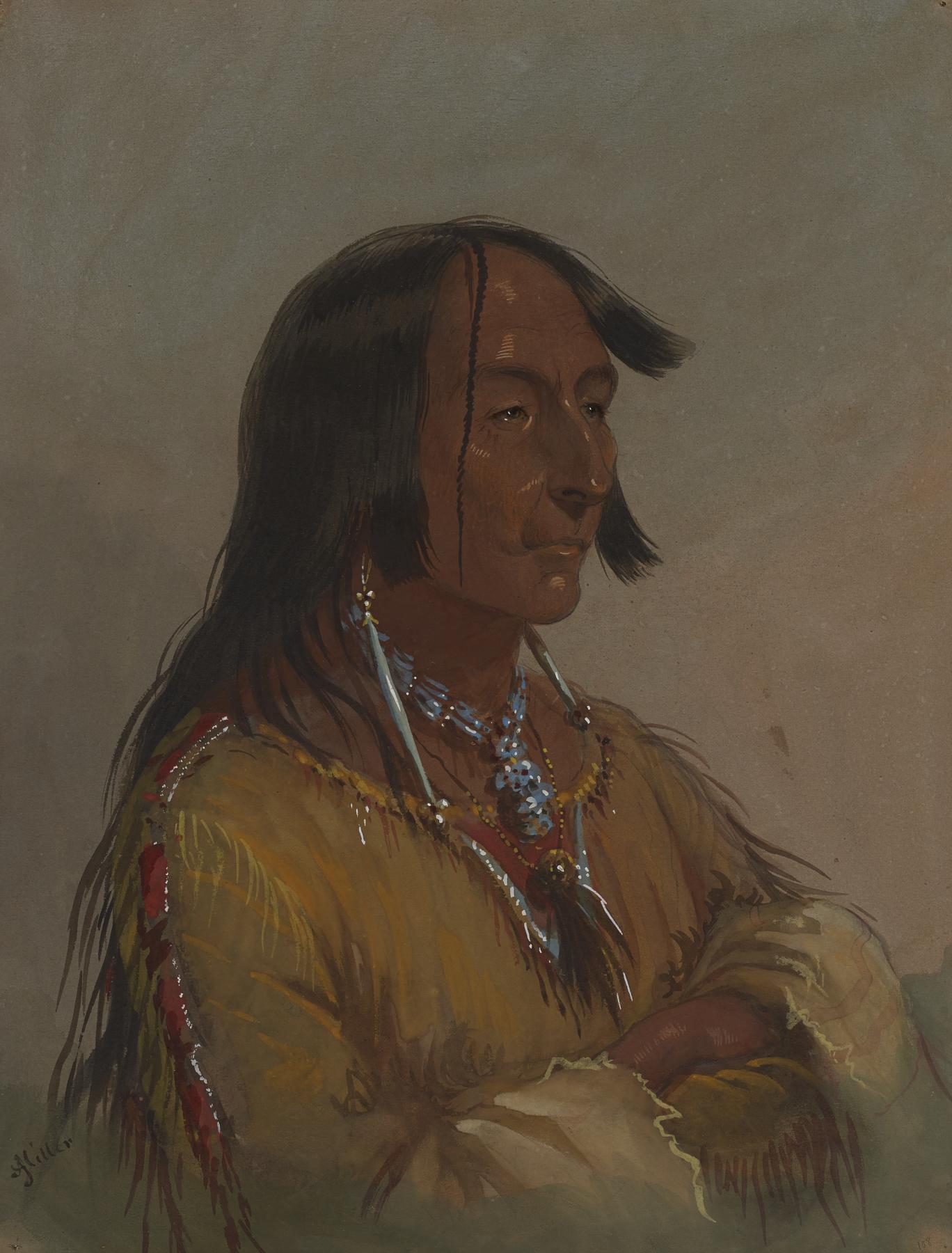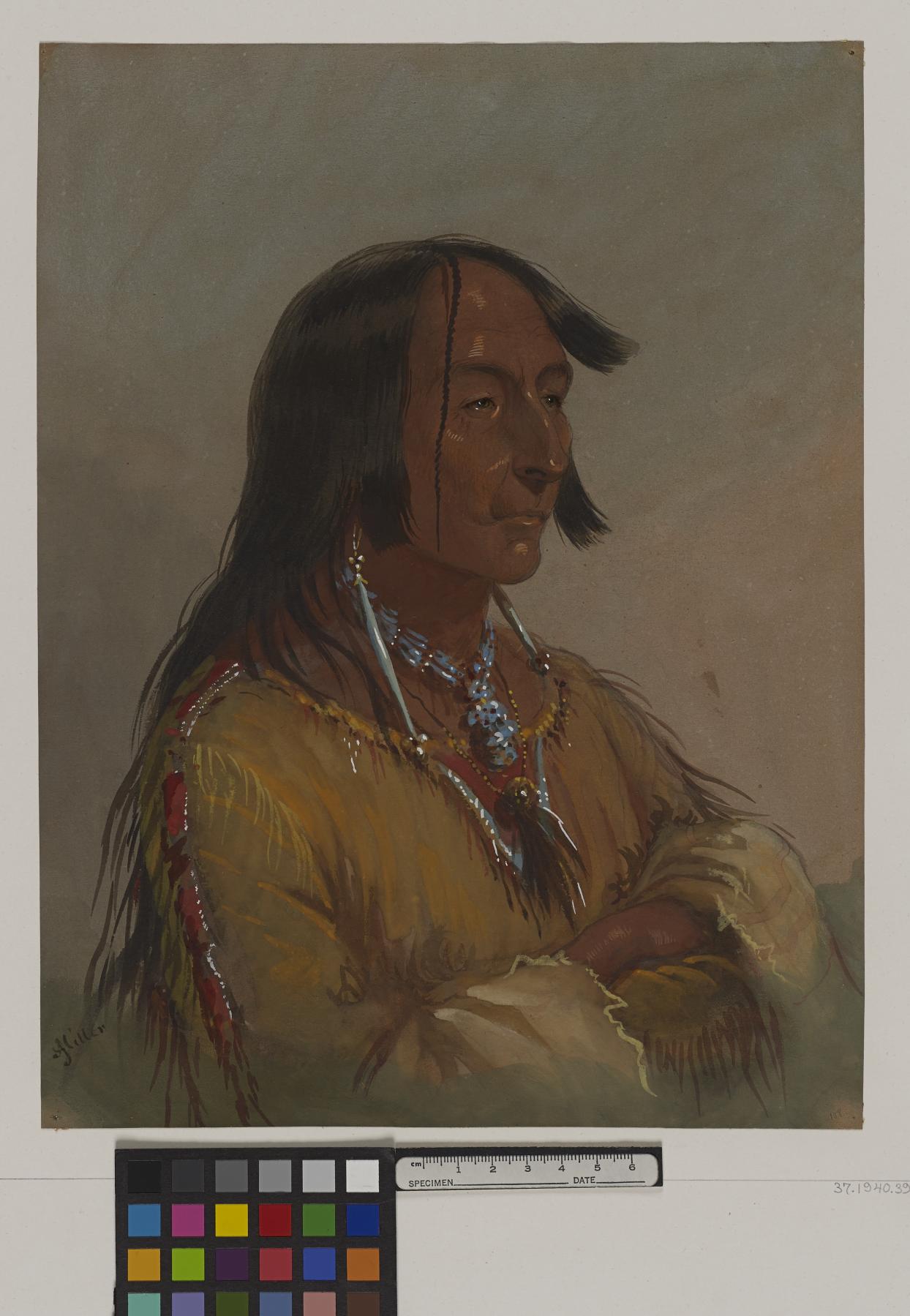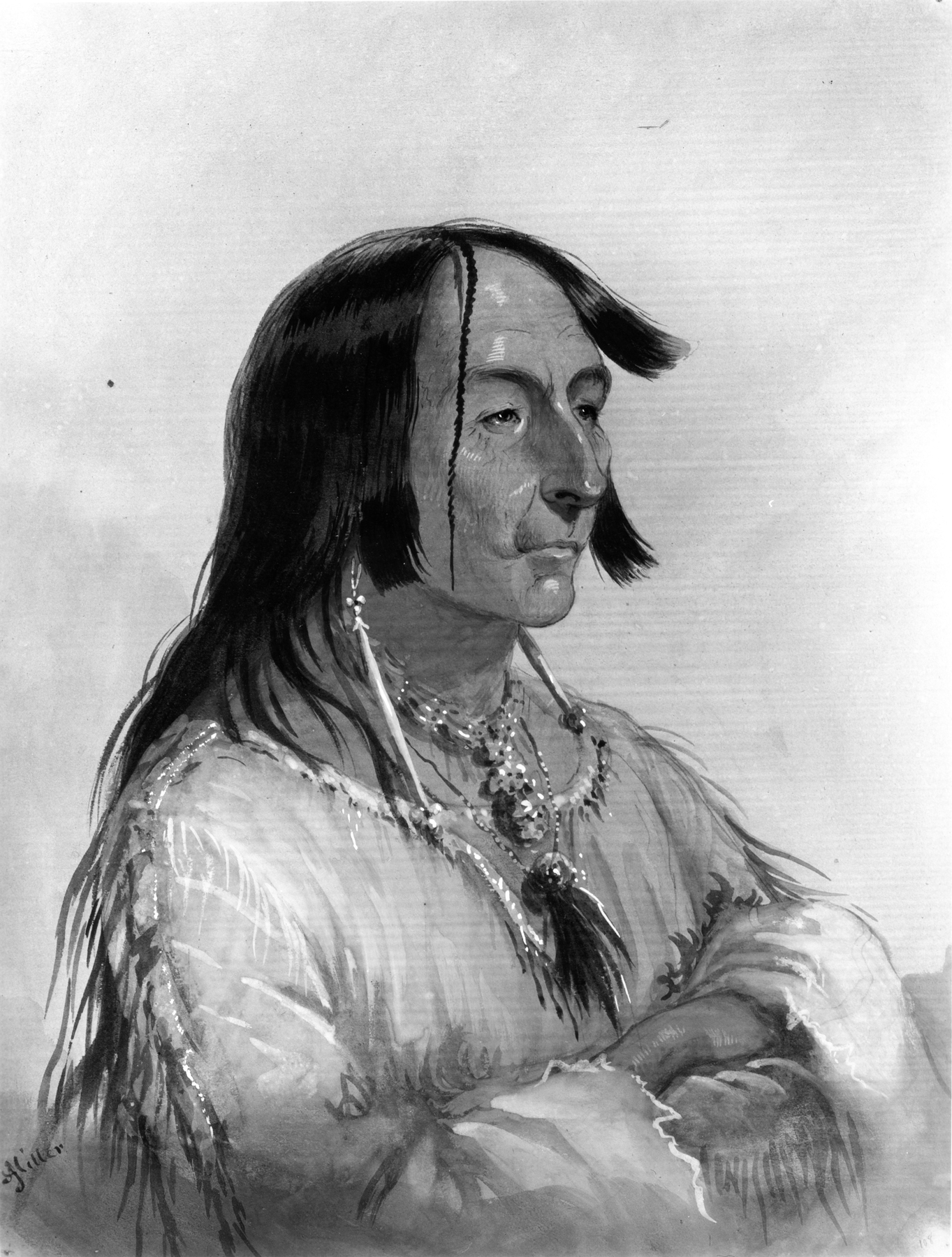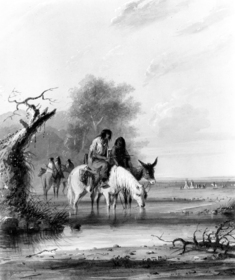Shim-a-co-che, Crow Chief
(18th and 19th Centuries )
Extracts from Alfred Jacob Miller’s original text, which accompanied his images of Native Americans, are included below for reference. These words, which shaped how Miller’s contemporaries viewed the watercolors, reveal the racism and sexism embedded in 19th-century exploration and colonization of the western part of what is today the United States.
Miller was impressed with Shim-a-co-che (High Lance), the Crow chief, a distinguished man, "full of dignity, and such as you might look for in a well-bred civilized gentleman." Miller noted his "grave look," the "well-cut Roman nose," and the "forehead [that] retreats overmuch...," and recalled that Shim-a-co-che had protested that some of the other sitters for Miller's portraits were common Indians who had counted no coups and did not deserve to be painted. - Extracted from "The West of Alfred Jacob Miller" (1837).
In July 1858 William T. Walters commissioned 200 watercolors at twelve dollars apiece from Baltimore born artist Alfred Jacob Miller. These paintings were each accompanied by a descriptive text, and were delivered in installments over the next twenty-one months and ultimately were bound in three albums. Transcriptions of field-sketches drawn during the 1837 expedition that Miller had undertaken to the annual fur-trader's rendezvous in the Green River Valley (in what is now western Wyoming), these watercolors are a unique record of the closing years of the western fur trade.
Inscription
Provenance
Provenance (from the French provenir, 'to come from/forth') is the chronology of the ownership, custody, or location of a historical object.
William T. Walters, Baltimore, 1858-1860, by commission; Henry Walters, Baltimore, 1894, by inheritance; Walters Art Museum, 1931, by bequest.
Exhibitions
| 1988 | Alfred Jacob Miller: Maryland and the West. The Walters Art Gallery, Baltimore; Washington College, Chestertown; Frostburg State University, Frostburg; Jewish Community Center of Greater Washington, Rockville. |
| 1983 | Indians of the Plains: The Watercolors of Alfred Jacob Miller. Frederic Remington Art Museum, Ogdensburg; Rockwell Museum of Western Art, Corning. |
| 1981-1982 | Alfred Jacob Miller: An Artist on the Oregon Trail. The Walters Art Gallery, Baltimore; Amon Carter Museum, Fort Worth; Buffalo Bill Historical Center, Cody. |
Conservation
| Date | Description | Narrative |
|---|---|---|
| 2/9/1959 | Loan Consideration | examined for loan |
| 8/19/1981 | Examination | examined for condition |
| 8/26/1981 | Treatment | mounted |
| 12/1/1982 | Loan Consideration | examined for loan |
| 4/18/1983 | Examination | examined for loan |
Geographies
USA (Place of Origin)
Measurements
H: 12 5/8 x W: 9 7/16 in. (32 x 24 cm)
Credit Line
Commissioned by William T. Walters, 1858-1860
Location in Museum
Not on view
Accession Number
In libraries, galleries, museums, and archives, an accession number is a unique identifier assigned to each object in the collection.
In libraries, galleries, museums, and archives, an accession number is a unique identifier assigned to each object in the collection.
37.1940.39







